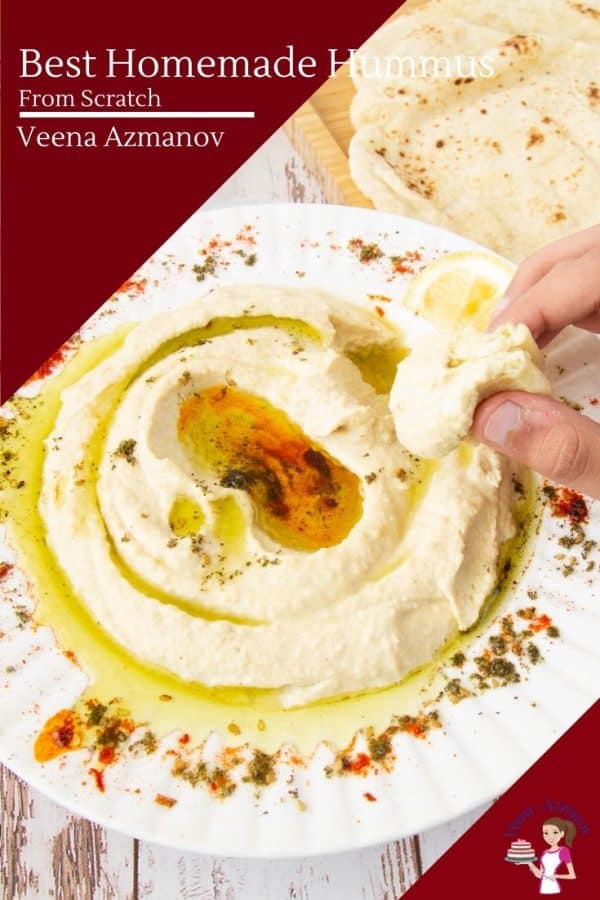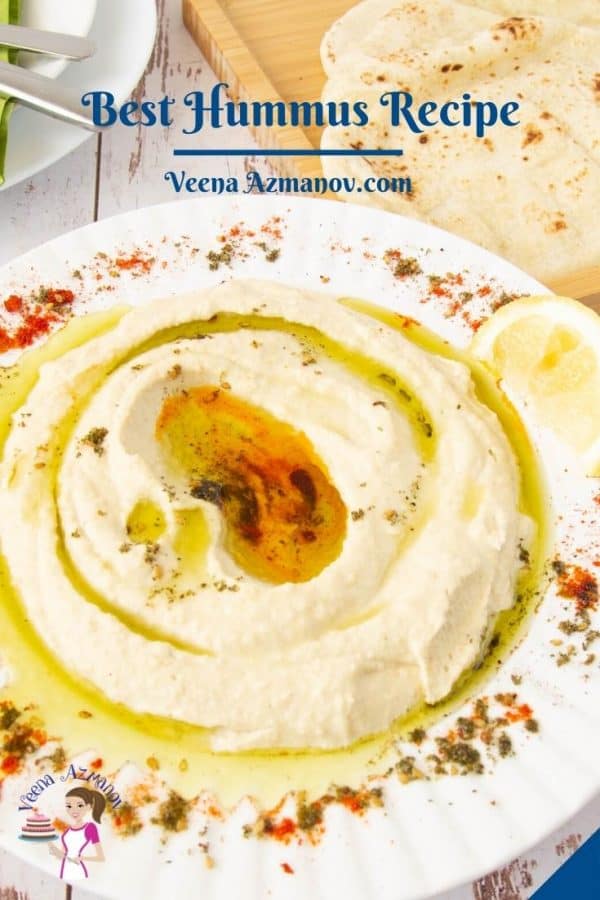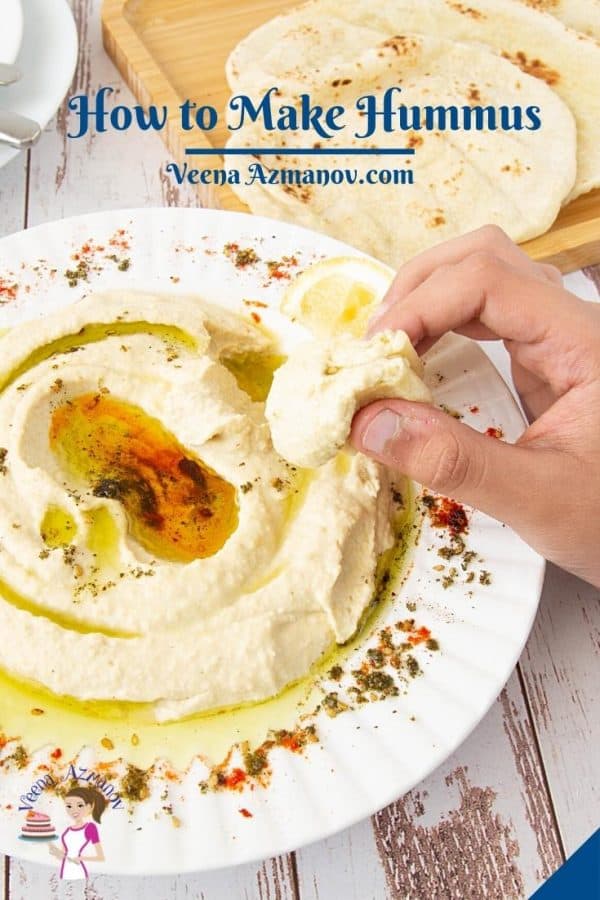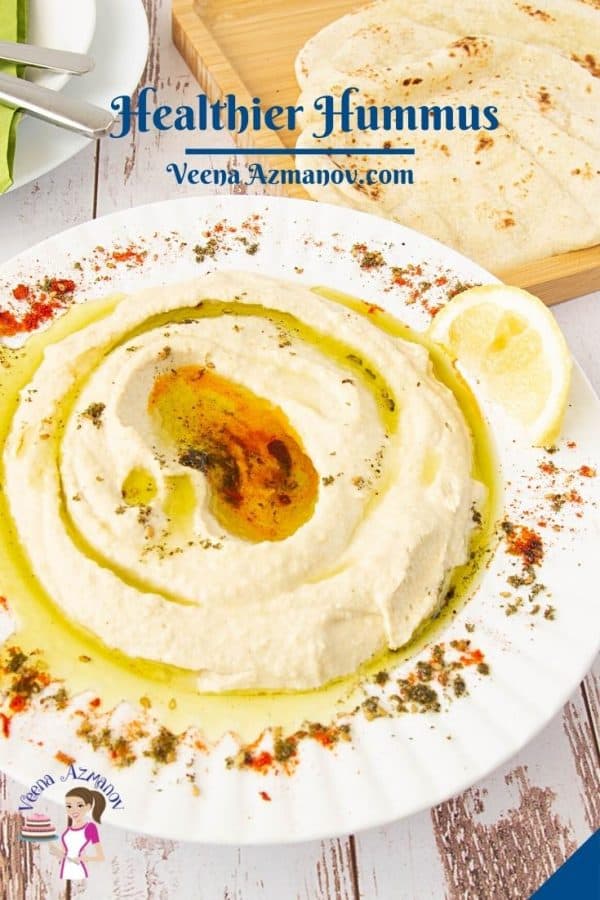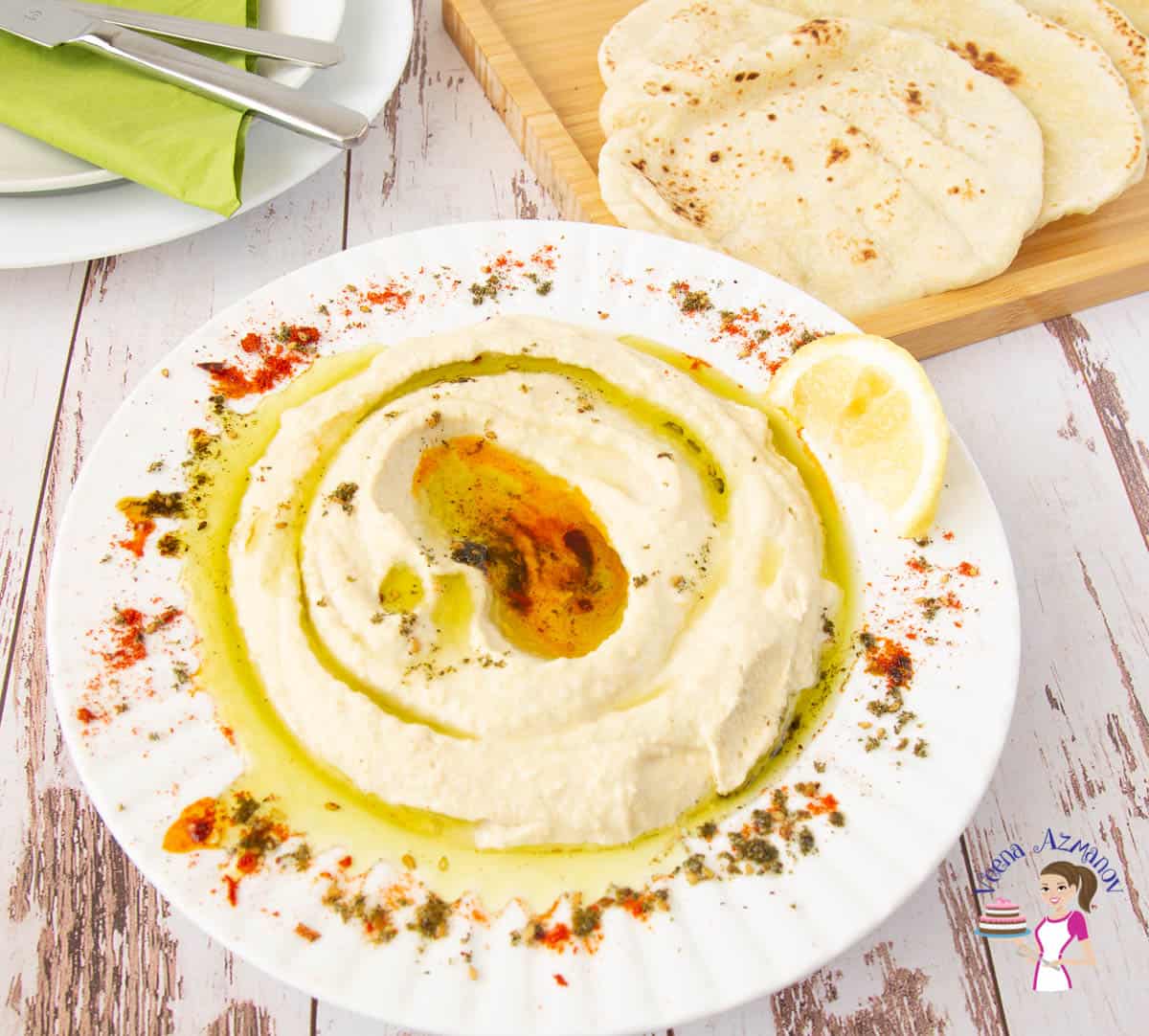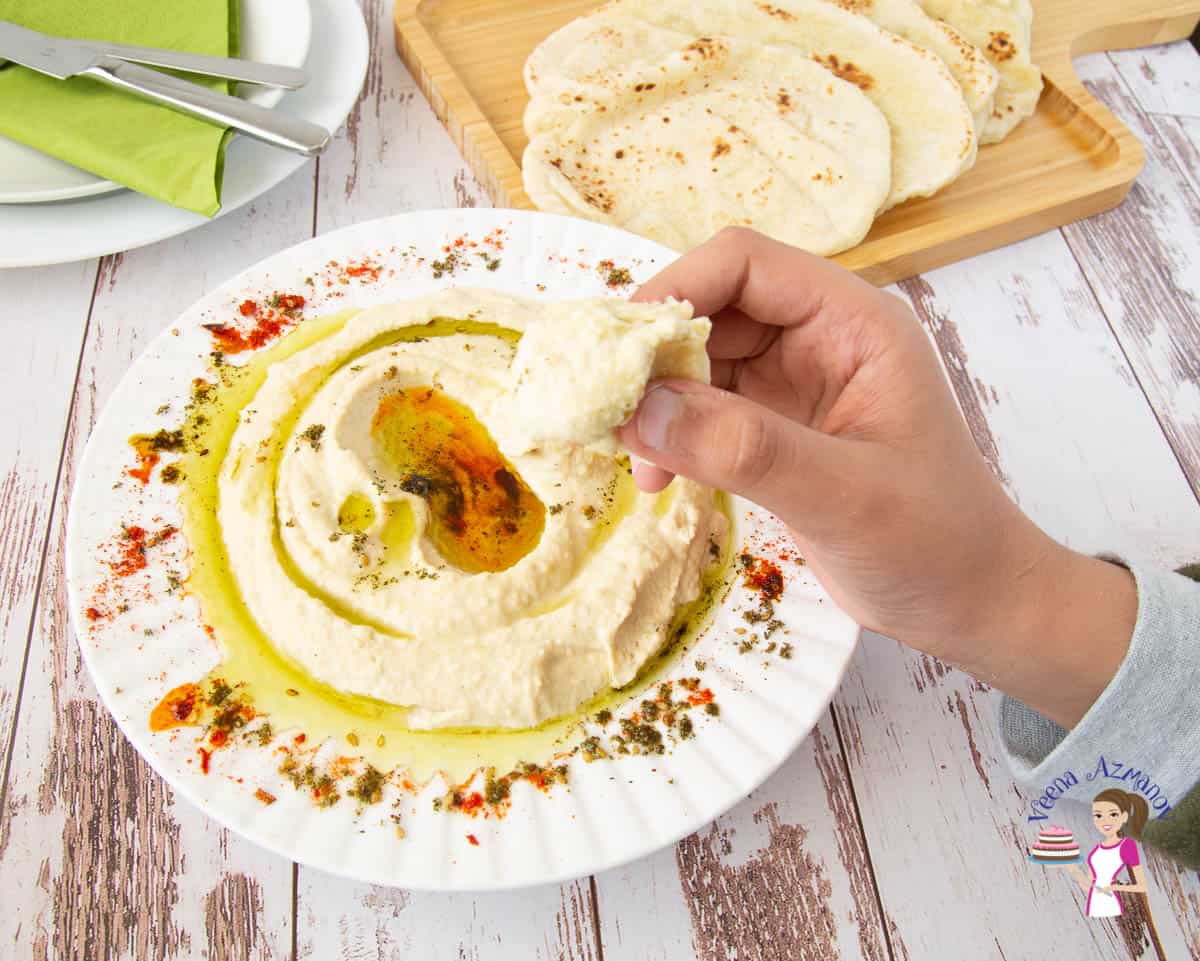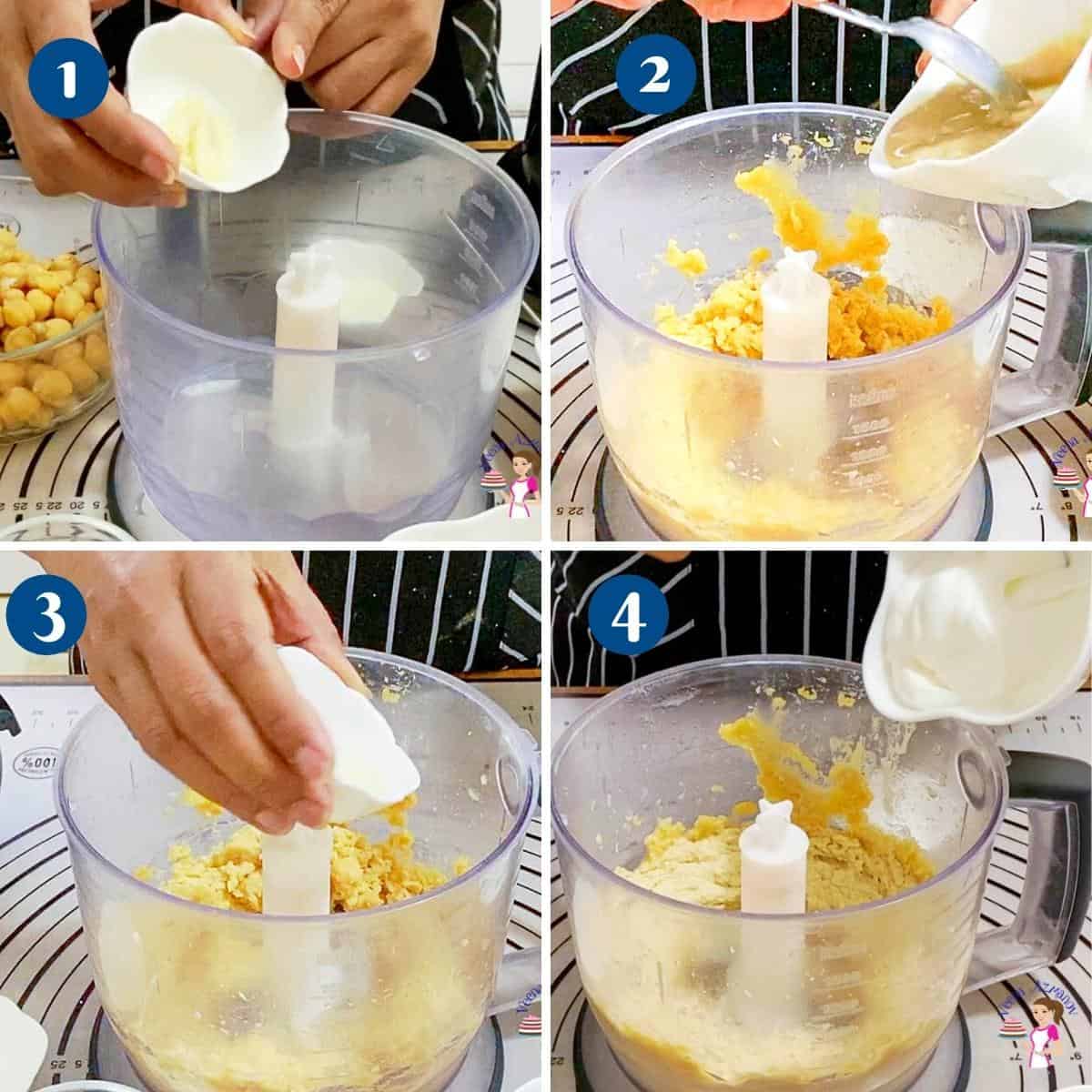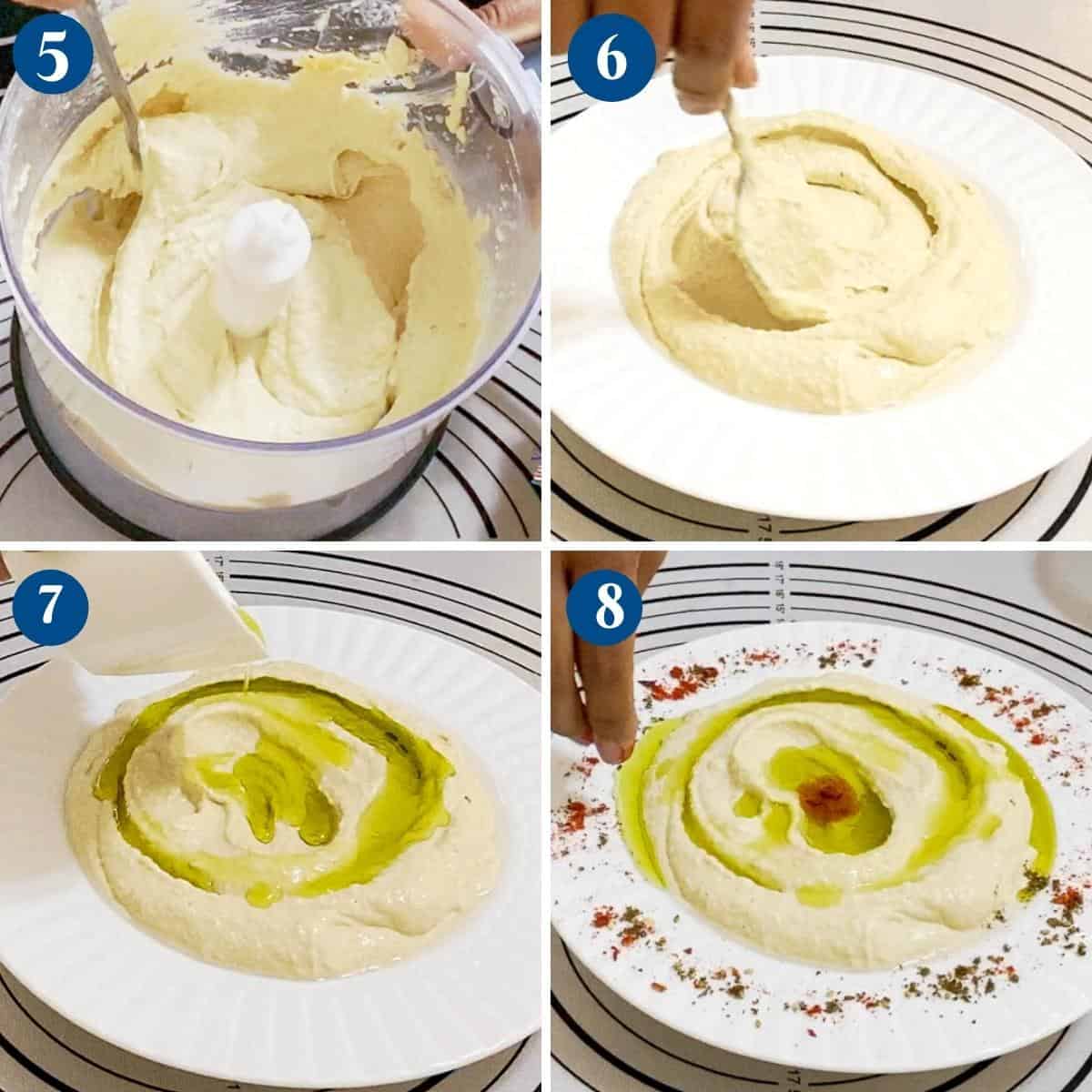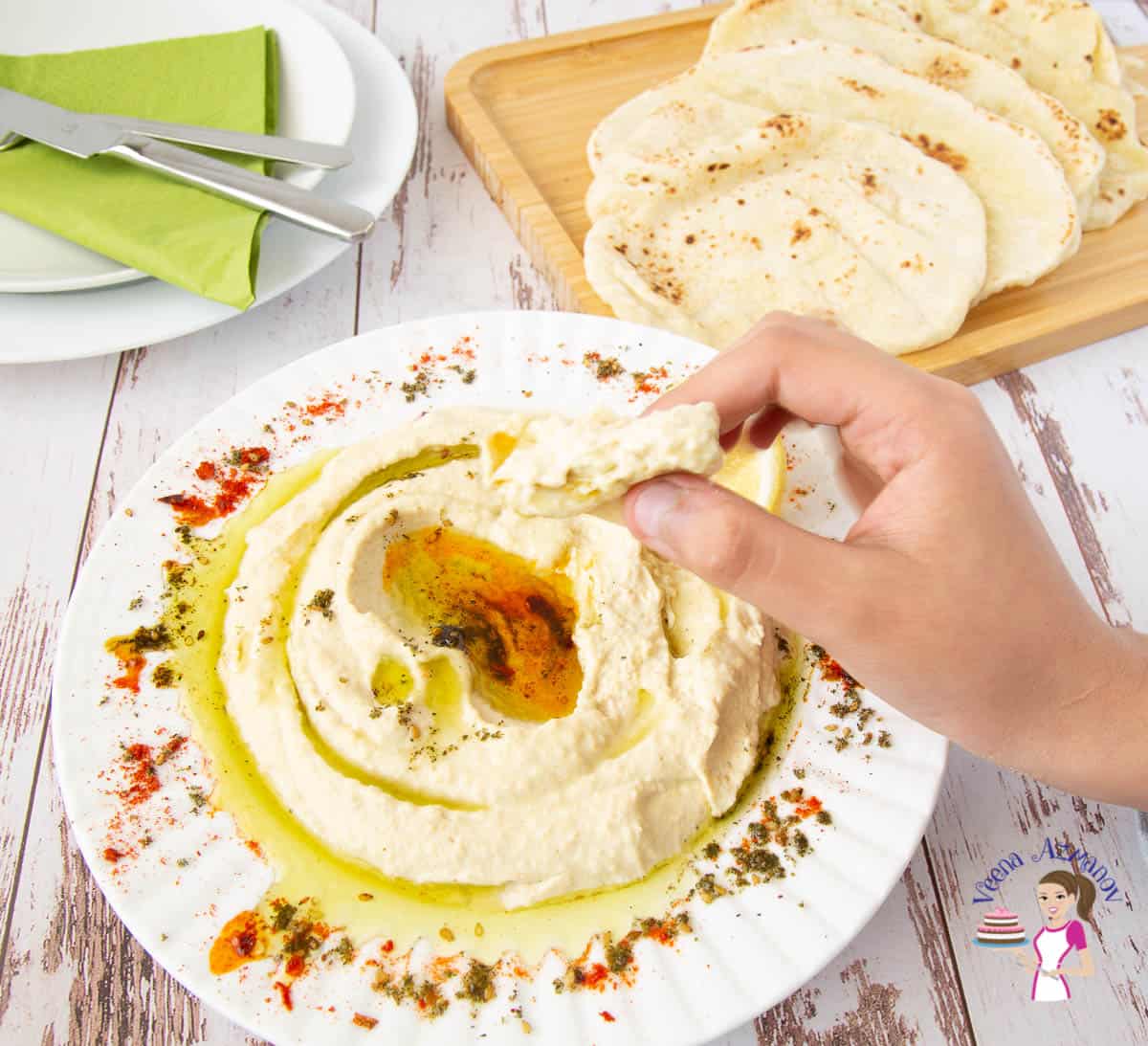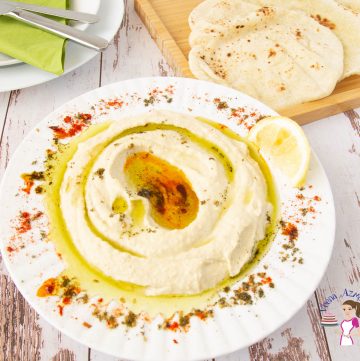Hummus, a beloved Middle Eastern dip, has become a global culinary staple thanks to its creamy texture and rich flavor. Made primarily from blended chickpeas, tahini (sesame paste), olive oil, lemon juice, and garlic, this versatile spread is not only delicious but also packed with nutrients. Hummus can be enjoyed in many ways: a dip for fresh vegetables, a spread for sandwiches and wraps, or a flavorful addition to salads and grain bowls. You will often find it as a spread in your falafel sandwich or served alongside a cucumber salad, and warm pita bread for a light Mediterranean lunch. Its simplicity allows for endless variations, incorporating ingredients like roasted red peppers, sun-dried tomatoes, or herbs for unique twists. Whether served as a snack, appetizer, or part of a main course, hummus brings a touch of Mediterranean warmth to any table. It is also the perfect side dish alongside many Middle Eastern main courses such as kebabs, skewers, or ground beef. The classic hummus is made with tahini sauce, and this one is made with yogurt. This variation offers several benefits and can cater to different dietary preferences and tastes. Yogurt typically has fewer calories and less fat compared to tahini, making it a lighter option. It can give the hummus a smoother, creamier texture. Some people find tahini’s strong, nutty flavor overpowering. Yogurt provides a milder, tangier taste that can be more appealing to those individuals. For those who are allergic to sesame seeds or simply do not like tahini, yogurt is an excellent alternative. Yogurt is often more readily available in some households compared to tahini.
Why make your own hummus?
Ingredients and substitutes
Chickpeas – The quickest way to make hummus, is, of course, to use canned chickpeas or garbanzo beans. But, traditionally, hummus is made with rehydrated dry chickpeas soaked overnight, and boiled until soft. Tahini – Also known as tahina in Arabic, is made from ground sesame seeds. It’s a very common ingredient in many Middle Eastern dishes. And, also as a sauce on its own served with other dishes. It is high in calories which is one of the reasons why hummus is used with caution. Garlic – Raw garlic in small quantities is subtle in flavor. So no, this does not taste garlicky. Lemon juice – You can use lemon or lime juice and adjust the quantity to suit your preference. Yogurt – I like to use Greek yogurt to make the hummus rich and creamy.
Step-by-step: Healthy hummus without tahini
Drain the can of chickpeas and reserve some liquid to use in the hummus.Pro tip – You must use cooked chickpeas for this recipe. If you don’t have canned, follow the other method for making hummus from scratch below. In a food processor (or blender) add garlic, chickpeas, lemon juice, salt, and pepper. Pulse for 30 seconds to a minute.Pro tip – Add 1/4 cup of the reserved liquid from the chickpeas, if necessary, to blend smooth. BUT, do not add too much liquid just yet as we still need to add the oil and tahini. Next, add the Greek yogurt. Blend for two full minutes. If necessary, add a tablespoon or more of the reserved chickpea liquid.Pro tip – The yogurt makes the hummus light and creamy. So, make sure to blend it well. Taste and adjust seasoning. Add more salt, pepper, or lemon juice as necessary.
To serve
Spoon hummus on a shallow plate. Use the back of the spoon to spread the hummus on the plate and create a swirl effect in the smooth hummus. Add some olive oil over the hummus. Garnish with a sprinkle of paprika. Place a tsp of za’atar spice in the center. Serve with warm pita bread and cucumber salad. Enjoy!
What do you serve with hummus?
If you eat hummus here locally you will find that they have lots of serving options that go with hummus. Quick interesting and a great way to try different options every time you eat hummus.
Hummus Tahini – just with a drizzle of tahini and sprinkle with paprika which is the way we like it. and Hummus with chickpeas and tahini so the same as above with a few whole cooked chickpeas as a garnish. Ideally, just save a few at the beginning of the recipe to use as garnish. Hummus with Ful – Ful is broad beans or fava beans spiced with cumin, garlic, and spices. Very delicious on its own. I prefer to have that on the side, not over my hummus. If you ever get a chance you must try it. It’s absolutely delicious. Hummus with a boiled egg – my husband grew up eating hummus for breakfast and so hummus with boiled eggs makes a complete hummus bowl for him. A few hummus places I know serve hummus over shakshuka!! Yup. So you have shakshuka on the bottom of the bowl and topped with a huge dollop of hummus, drizzled with tahini, and a side of salad with fresh parsley Some other condiments used to prep hummus here are zaatar spice (a very middle eastern herb) cumin, paprika, tahini, and even a spicy lemon juice drizzle. A place that sells good hummus usually will have an option of falafel on the side. I cannot tell you why but the two just go together. I love having a bowl of hummus, salad, and tahini on the side when I make my homemade falafel.
Tips for success
The trick to making creamy hummus is to ensure the chickpeas are well cooked. They should be soft otherwise they blend into a grainy mixture. Some canned chickpeas are best skinned to prevent the grainy texture. Whether you use canned or home-cooked chickpeas make sure to drain them well otherwise they won’t blend to a smooth paste. Once it is a paste consistency you can add liquids to lighten the hummus. Garlic is a wonderful addition to hummus but too much can overpower the flavor so be careful. The right texture for the hummus is similar to smooth peanut butter consistency. A very thick hummus can be difficult to digest making you feel very bloated. Drinking plenty of water is usually helpful.
Creative variations
Beet Hummus – add pureed roasted or boiled beet to the prepared hummus. Blend until smooth. Carrot hummus – Add pureed cooked or roasted carrots to the prepared hummus. Blend until smooth. Avocado hummus – blend a ripe avocado until smooth then fold into the prepared hummus. Red pepper hummus – Blend a roasted red pepper until smooth. Then fold it into the prepared hummus. Sun-dried tomato hummus – add 1/4 cup of chopped sun-dried tomatoes to this batch of hummus. Garlic hummus – Add 1/4 cup of roasted garlic cloves to the hummus instead of raw garlic. Double tahini hummus – Use 1/2 cup tahini paste instead of 1/4 cup in the recipe. Cauliflower hummus – Roast 2 cups of cauliflower florets on a baking tray. Blend into a puree then add to the prepared hummus. Cheesy hummus dip is a wonderful dip with chips and vegetable sticks – add 1/2 cup cream cheese to this hummus Hummus with meat – a full meal with hummus served with ground beef, warm pita, and cucumber salad.
Crispy falafel recipeThe Ultimate Hummus Ma Lahma: Hummus with MeatVersatile and Flavorful: Ground Beef Recipes You’ll LoveChickpeas SaladTahini Cookies
Frequently asked questions
Crispy Falafel Recipe Baba ganoush or Lebanese eggplant salad Shawarma chicken, Ground beef kebabs, Shakshuka – Eggs Poached in Tomato Sauce Moroccan Fish in Spicy Tomato Sauce – Chraime Tahini Cookies, Halva Cookies Pistachio Halva Cake, Honey Cake Recipe Challah Bread Recipes See all Middle Eastern recipes
Thank you for sharing - Save for later

